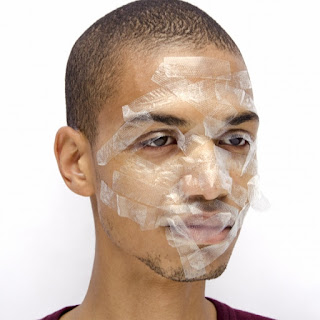For Throw Back Thursday - Below review was originally published in the early 1990s in Dimensions magazine and the El Eco newspaper chain - it still lives online here.
The summer art season is well underway in Washington - Ranging from American master James McNeil Whistler to Dutch artist Piet Mondrian, a wide variety of exhibits will be on display through most of the summer in and around the Mall, and are sure to satisfy, bore and entertain art lovers and visitors alike.
Artists who dabble in many media and subjects (with the notable exception of Picasso) are often viciously dubbed as "jack of all trades and masters of none." Piet Mondrian (1872-1944) can justifiably be called a "jack of one trade and master of that one trade." Simply put, Mondrian was little more than a graphic designer who simply re-arranged black lines and color rectangles over and over.
In the end, he contributed hugely to modern design, and probably made the biggest impact of any 20th century artist upon daily common items. His images have become familiar in dresses, book covers, refrigerator doors, wallpapers, tiles and even bed sheets to name a few.
Per two of the guards at the National Gallery, the show has so far been received mildly by the public (it was generally ignored by Dutch crowds in its debut showing in The Hague).
The Hirshhorn Museum is showing the work of Irish-American artist Sean Scully; this exhibit is a good follow on to the Mondrian exhibit; try to see them both in the same day. Scully is one of the most successful painters of his generation (he maintains studios in New York, London and Barcelona) and is a direct product of the award machinations of the National Endowment for the Arts (NEA).
Spanish master Salvador Dali once said that if "you can't paint well, then paint big," and this appears to be a maxim to Scully's works at the Hirshhorn, a series of 62 gargantuan paintings on display as a 20-year retrospective. Strangely reminiscent of giant quilts and jigsaw puzzles, the paintings sometimes baffle the honest viewer. The 15 by 19 foot "Angelo" (1994), which is representative of Scully's recent works, was compared to a giant Rubik's cube by an visitor while I was looking at the painting; I agreed.
Alfred Stieglitz, one of the great masters of photography is on exhibit at the Corcoran Gallery. Perhaps the first superstar photographer of the 20th century, Stieglitz introduced unique portraits of Georgia O'Keefe and Pablo Picasso which have become art history icons. He is credited with being the catalyst which brought photography into the realm of fine art. 87 of his pieces on exhibit at the Corcoran are ample evidence of the well-deserved title of "fine art" when dealing with his works. This is a magnificent show from a remarkable man and tremendously important artist; it should not be missed!
In a jump from the sublime to the mundane, the National Gallery's "Arshile Gorky: The Breakthrough Years," delivers four rooms full of work by the man anointed by Andre Breton, the high priest of surrealism, as the "last of the surrealists."
Armenian born Gorky was fond of saying that the "origin of his work was in Armenia." A stroll through the exhibit quickly brings to mind the question that perhaps the origin of his works may be in the art of Spaniards Picasso and Miro, and even the work of the father of abstraction, the Russian Wassily Kandinsky.
A tormented artist, Gorky struggled to find a place while being overly influenced by the true giants of his generation; he died at the early age of 44 in 1948. Had he been living today, I suspect he would be painting in the style of Scully or some such other modern "master" who happens to be "in."
Finally, the work of (and portraits of) one of the better known masters, American James Abbott McNeill Whistler will be on exhibit both at the National Gallery of Art and the National Portrait Gallery. Critics once denigrated his works as "decorative" and "formalized;" they were wrong. No review is needed of the great work of this true master, a modern 19th century Velazquez - Don't miss this show!









